C program Cosmologist of Life: 100 Years of Higuchi Genichiro
A special retrospective in memory of director Higuchi Genichiro, born in Tendo City in Yamagata Prefecture. The legacy of the movie director who, through the moving image, persisted in pursuing the enigma of the evolution of life!
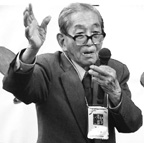
“It is surprisingly quite rare in Japan to see things approached from the perspective of, ‘Rather than clearly explaining things we already understand, what do we do about the things we don’t?’ It’s very hard here for researchers to get money to study issues that are not well understood, and therefore we have to work on the edge of starvation, but the pleasure of discovery is such a pleasure that you end up forgetting all about money! I make films out of a passion for wanting to express to the audience the fun of discovering new things, and that’s perhaps why I am still tirelessly working at this age.”
(Speech at Yufuin Bunka-Kiroku Film Festival, May 2002)
 Nagasaki Children
Nagasaki Children
(“Nagasaki no ko”)- JAPAN / 1949 / Japanese / B&W / Video (Original: 16mm) / 20 min
Director, Script: Higuchi Genichiro
Based on Memoirs of Nagasaki Children: Living under the Atomic Cloud, Nagai Takashi, ed.
Photography: Murakami Kikuo
Producer: Hirayama Taiho
Production Company: Taiyo Eiga
Source: Cine Document
This film brings to the screen the personal accounts of the atomic-bomb survivors at Yamazato Elementary School, located close to ground zero in Nagasaki and where over 1,300 were injured or killed. An energetic depiction showing the children recovering, it undauntedly evokes the circumstances of “that day,” even under the American Occupation’s severe restriction of expression.
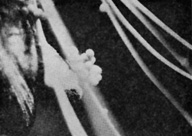 Silent Battle: The Life of the Pine Moth
Silent Battle: The Life of the Pine Moth
(“Koenaki Tatakai—Matsukemushi no issho”)- JAPAN / 1955 / Japanese / B&W / 16mm / 20 min
Director, Script: Higuchi Genichiro
Photography: Goto Jun
Music: Fukumi Jun
Commentary: Fujikura Shuichi
Producers: Mitsui Takaosa, Murayama Eiji
Planning: Forestry Agency
Production Company: Mitsui Production Co., Ltd.
Source: National Film Center
With the pine moth as the main character, we investigate the causal interactions in the “eat or be eaten” world of the pine forests where it breeds. It became a big turning point in the director’s life when, during location scouting, his discovery of the pine moth’s powerful natural enemy, the Dasysyrphus bilineatus, came to the attention of the academic community.
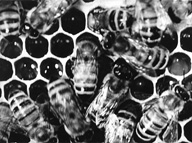 Secret in the Hive
Secret in the Hive
(“Joobachi no shinpi”)- JAPAN / 1962 / Japanese / Color / 16mm (Original: 35mm) / 33 min
Director: Higuchi Genichiro
Script: Higuchi Genichiro, Uchiki Yoshio
Photography: Kobayashi Kazuo
Music: Mamiya Michio
Commentary: Kawakubo Kiyoshi
Producer: Murayama Eiji
Planning: Chugai Pharmaceutical Co., Ltd.
Production Company, Source: Sakura Motion Picture Co., Ltd.
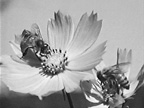 Observe bee society, where thousands of bees maintain a perfectly balanced order with the queen at its center. Showing events such as the dance to transmit information, the system of work division, and warfare with hornets, the camera records in detail a whole society that operates as if it were a single organism.
Observe bee society, where thousands of bees maintain a perfectly balanced order with the queen at its center. Showing events such as the dance to transmit information, the system of work division, and warfare with hornets, the camera records in detail a whole society that operates as if it were a single organism.
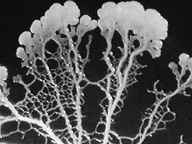 The Life History of True Slime Molds
The Life History of True Slime Molds
(“Shinsei nenkin no seikatsushi: Shinka no nazo, henkeitai o saguru”)- JAPAN / 1997 / Japanese / Color / 16mm / 28 min
Director, Script: Higuchi Genichiro
Photography: Ishii Shigehisa
Research: Higuchi Genichiro, Ishii Shigehisa
Commentary: Wada Atsushi
Planning: Higuchi Bioscience Laboratory
Production Company, Source: Cine Document
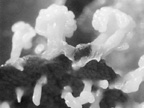 True slime molds originated on earth one billion years ago, and have adapted skillfully to their environment. Micrography captures the plasmodia’s rhythmical protoplasmic flow, movement of the slime mold invisible to the naked eye, and more. Higuchi observed this intriguing world of tiny organisms for a long time, completing this tour de force at age ninety-one.
True slime molds originated on earth one billion years ago, and have adapted skillfully to their environment. Micrography captures the plasmodia’s rhythmical protoplasmic flow, movement of the slime mold invisible to the naked eye, and more. Higuchi observed this intriguing world of tiny organisms for a long time, completing this tour de force at age ninety-one.
 Higuchi Genichiro Higuchi Genichiro
Born March 14, 1906, in Tendo City, Yamagata Prefecture. While working as a banker, he graduated from an evening course at Meiji University. Aspiring to become a painter, he studied Renaissance art with Kimura Shohachi. After reading an essay on film by Terada Torahiko, he became interested in issues of art and science, and entered the film industry when he was in his thirties. In 1942, he made his directorial debut with Youth Corps, Defenders of the Skies. For the next sixty years, until his final film The World of Mushrooms (2001), completed in his late nineties, he was continuously active as a filmmaker. He is known for his visual research unraveling unknown facts about evolution using time-lapse photography, and his “visual essay” seeking a mechanism to differentiate the cells of cellular slime molds was internationally acclaimed. He died on February 23, 2006, just before his 100th birthday. Major works: Youth Corps, Defenders of the Skies (1942), Nagasaki Children (1949), Shirohata-jiisan (1952), Silent Battle: The Life of the Pine Moth (1955), The Sakuma Line (1956), The World of Vitamin B1 (1958), The Joy of Science (1958–60), Camera and Shutter (1960), Secret in the Hive (1962), M.I.B. Machine (1964), Nature and Tradition in Shikoku (1965), Thinkin’ in the Rain (1966), The Dynamic Flow of Life: An Investigation of the Wonders of the Blood (1967), Nara and Yamato (1968), Ukiyoe (1969), Experiments on Microorganisms (1970), Cultural Treasures along the Wayside (1974), Journey in East Germany (1975), Building on the Rock: A Record of the Construction of the Ikata Nuclear Power Plant (1978), Shiitake (1980), The Life Cycle of Cellular Slime Mold (1982), Nonaka Kenzan: The River Flows On (1987), Kukai, Great Teacher of the Buddhist Law (1988), Behavior and Differentiation of Cellular Slime Mold (1991), The Life History of True Slime Molds (1997), Symbiosis between Fungi and Plants (1999), The World of Mushrooms (2001) |
